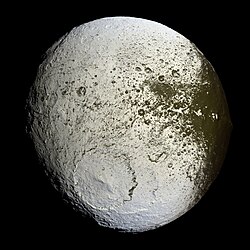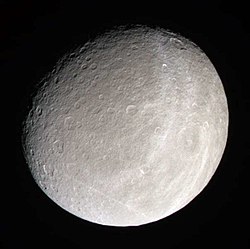PIA18317-SaturnMoon-Tethys-Cassini-20150411
http://photojournal.jpl.nasa.gov/catalog/PIA18317
Like most moons in the Solar System, Tethys is covered by impact craters. Some craters bear witness to incredibly violent events, such as the crater Odysseus (seen here at the right of the image).
While Tethys is 1,062 kilometers (660 miles) across, the crater Odysseus is 450 kilometers (280 miles) across, covering about 18 percent of the moon's surface area. A comparably sized crater on Earth would be as large as Africa!
This view looks toward the anti-Saturn hemisphere of Tethys. North on Tethys is up and rotated 42 degrees to the right. The image was taken in visible light with the Cassini spacecraft narrow-angle camera on April 11, 2015.
The view was acquired at a distance of approximately 190,000 kilometers (118,000 miles) from Tethys. Image scale is 1 kilometer (3,280 feet) per pixel.
The Cassini mission is a cooperative project of NASA, ESA (the European Space Agency) and the Italian Space Agency. The Jet Propulsion Laboratory, a division of the California Institute of Technology in Pasadena, manages the mission for NASA's Science Mission Directorate, Washington. The Cassini orbiter and its two onboard cameras were designed, developed and assembled at JPL. The imaging operations center is based at the Space Science Institute in Boulder, Colorado.
For more information about the Cassini–Huygens mission visit http://saturn.jpl.nasa.gov and http://www.nasa.gov/cassini. The Cassini imaging team homepage is at http://ciclops.org.Relevantní obrázky
Relevantní články
Cassini (sonda)Cassini byla americká planetární sonda, která byla jako první navedena na orbitu Saturnu pro jeho průzkum, jeho prstenců a systému jeho měsíců. Vypuštěna byla v roce 1997 a po dvacetileté výzkumné misi, v roce 2017, plánovaně shořela v atmosféře Saturnu. Na jejím přístrojovém vybavení se podílely také evropská organizace pro výzkum vesmíru ESA a italská národní kosmická agentura ASI. Sonda měla dvě samostatné části: mateřskou sondu Cassini a atmosférickou sondu Huygens. .. pokračovat ve čtení










